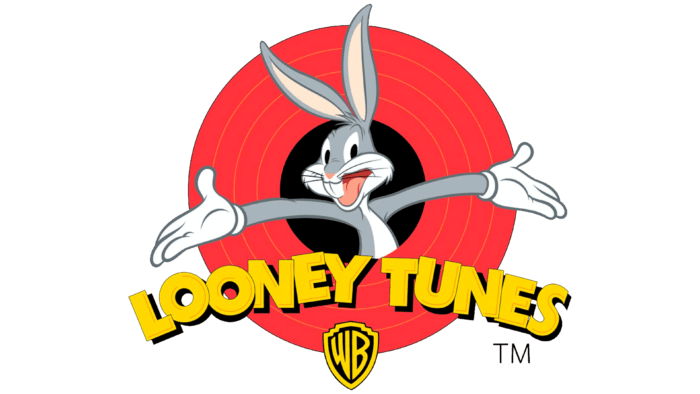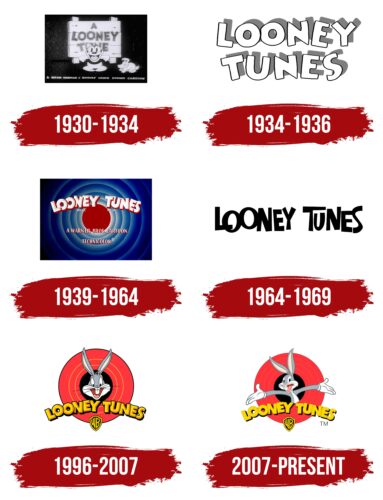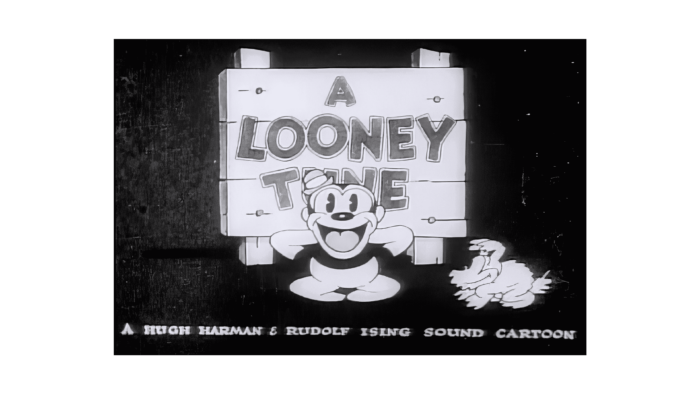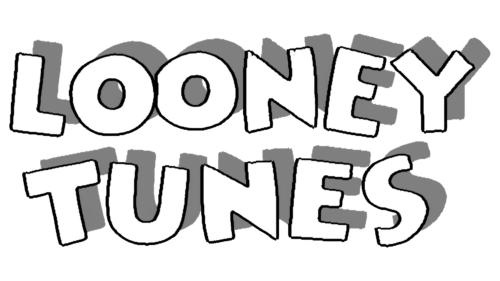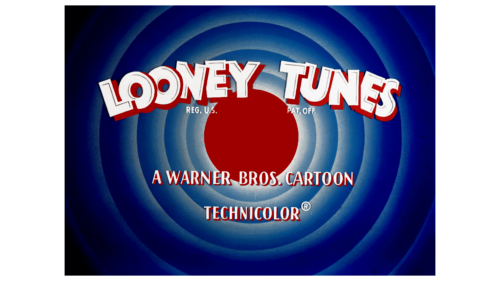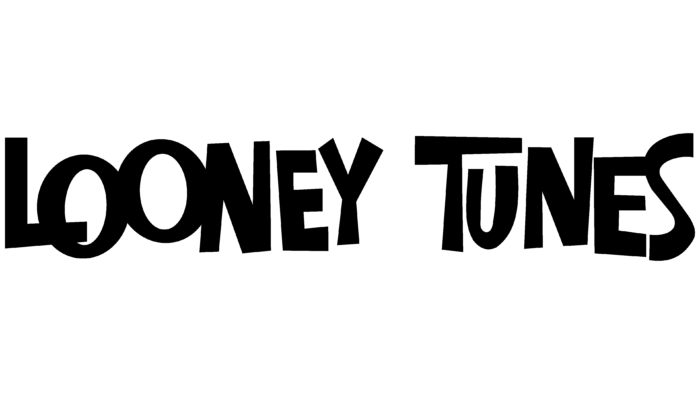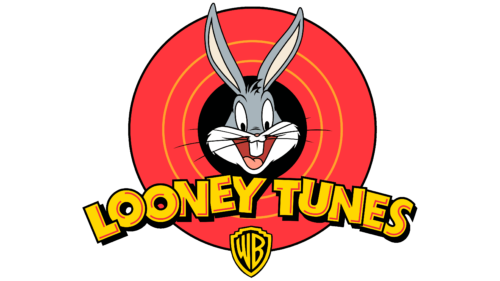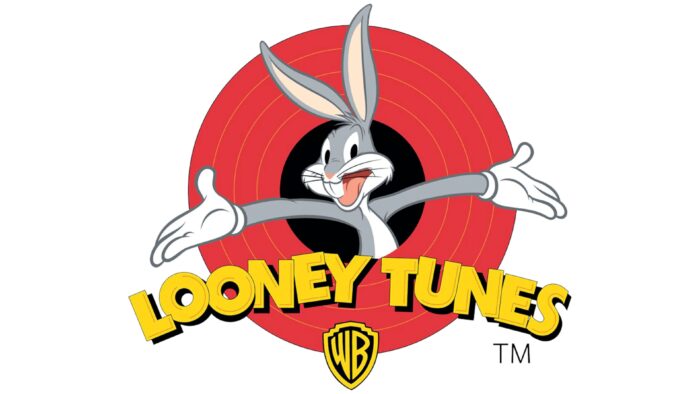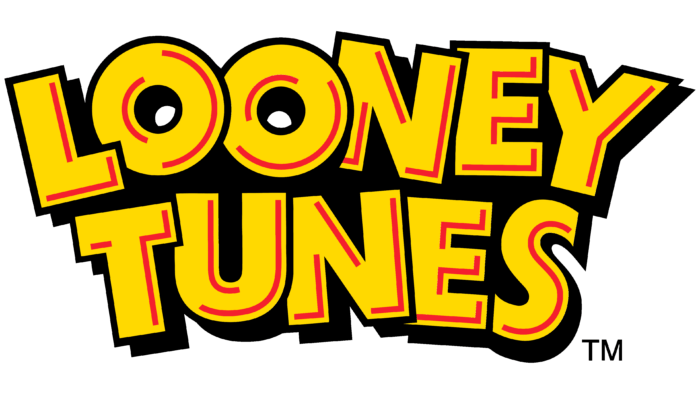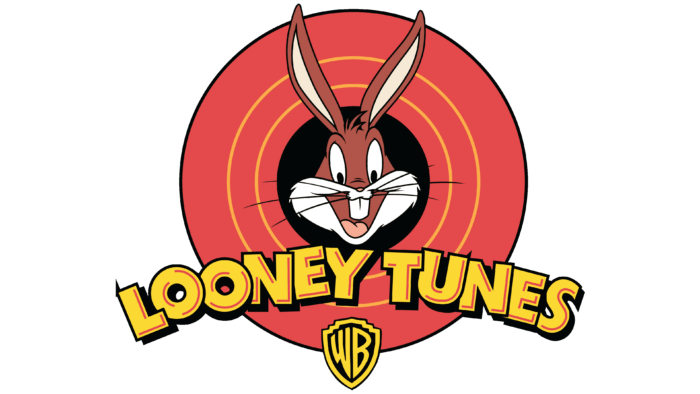The cheerful character depicted on the emblem invites viewers into the world of childhood and fun adventures. The Looney Tunes logo emphasizes that all cartoon characters are always in a good mood and try to convey it to the viewer.
Looney Tunes: Brand overview
| Founded: | 1930–present |
| Founder: | Warner Bros. Entertainment Inc. |
| Headquarters: | United States |
Looney Tunes is one of the Warner Bros. Entertainment Inc. It consists of short animated films that first appeared in 1930 and are still being produced today. Unlike its partner series Merrie Melodies, which was based on the most popular songs, Looney Tunes was story-driven from its earliest days. But then the line between the two projects blurred, helped by the transition to color film.
The early cartoons were black and white and were created to promote music, which was owned by Warner Bros. It was assumed that viewers would start buying records and sheet music after watching the short films. The very first star of Looney Tunes was the cartoon character, Bosko. He used to say the famous phrase “That’s all, folks!” at the end of every episode. Then the animators quit and took Bosko with them as copyright owners. This prompted the company to add many characters to the story, including Porky Pig (which debuted in 1935), Bugs Bunny (1940), Tweety (1942), and the stalking cat Sylvester (1945).
In the 1970s, racist and suicidal jokes, dangerous stunts, and smoking and drinking alcohol scenes were removed from cartoons. Everything was done to increase the popularity of the animated series among a wide audience. Production only lasted until 1987, when the creators realized that a new generation of viewers needed new content.
Meaning and History
The inspiration for the name Looney Tunes was the Silly Symphony collection of musical animated films. Many believe that the famous brand used to be known as Looney Toons and wonder at what point they managed to rename it. This misconception stems from the Mandela Effect when many people remember things that never really happened. In reality, the word “Tunes” has always been spelled with a “u” and an “e.” Numerous logos that featured the name of the show prove this.
1930 – 1934
The first emblem was part of the black and white cartoons, so it looks appropriate. The episodes used an animated version, and all the static images are individual frames taken from the credits. For example, in the final clip, Bosko and his dog jumped out from behind a wooden road sign that read “A LOONEY TUNE.” The character spread his arms out to his sides and uttered his famous phrase, “That’s all, folks!” At the same time, the dog was on his left side and barked loudly.
The logo shows the boy with his hands behind his head and a big smile on his face. At the bottom, the sentence “HUGH HARMAN-RUDOLF ISING SOUND CARTOON” is written in white capital letters. Bosko came about through the efforts of a team of animators that included Rudolf Ising and Hugh Harman. In the early 1930s, it was the first and only Looney Tunes character. He disappeared from the screens in 1933 when his rights holders quit Warner Bros. because he wasn’t paid enough. Thus ended the era of credits with Bosko.
1934 – 1936
When Bosko disappeared from the screens, the cartoonists continued to use the Looney Tunes wordmark, which appeared in various versions on a white sign and then began to be depicted against the backdrop of a theater curtain. The design of the inscription changed frequently, but it was always based on a bold sans-serif font. Another important nuance was the jumping letters: they leaned in opposite directions and went up or down. The words were in two lines, centered. The glyphs were capitalized and white, complemented by thin black outlines and wide dark gray shadows. The developers of the emblem adhered to the cartoon style, so they rounded off most of the corners and made the lines uneven and trembling.
1939 – 1964
In the 1940s, the film studio began producing the first color short films. Their gradual production began in 1942. The new series had colorful logos in the form of concentric circles. The designs were varied. For example, the Porky Pig series most often used a version with blue and blue rings and a red middle. For cartoons featuring temporary characters or Daffy Duck, a yellowish-green emblem with the same red center was created.
The orange-pink logo with a blue circle in the middle could be seen in the credits of animated works by cartoonist Friz Freleng. And before Freleng introduced Bugs Bunny into the story, the rings were red with a black gradient.
All variants shared a common element, the inscription “LOONEY TUNES.” The brand name consisted of uppercase bold letters that crawled over each other and were lined up in an arch shape. They cast shadows whose color depended on the background.
1964 – 1969
In the 1960s, the era of short animated films was coming to an end, but the popularity of Looney Tunes never waned. By that time, the Warner Bros. animation studio had closed down, so DePatie-Freleng Enterprises, Inc. took over the animated series production. It decided to use the opening titles designed by Chuck Jones as logos. Thus came the stylized wordmark “LOONEY TUNES” with bouncing letters. It used a custom sans serif font. All the lines in the inscription were so different that even the two “E’s” were unlike each other.
This text emblem continued into the late 1960s when short film production returned to Warner Bros. Animation. Many remembered it as a symbol of decline because the studio had financial problems, and popular characters disappeared from the screens.
1996 – 2007
After a long hiatus, Warner Bros. decided to revive Looney Tunes and release new series. Their logo contained a Bugs Bunny head in the center of the “target.” The bunny looked just like in the cartoons: he smiled merrily, putting his big teeth forward. The character’s head was inside a black circle with a frame of three orange rings separated by thin lines. The lower half was crossed by an arched inscription “LOONEY TUNES” with jagged yellow and black letters. Below it was a shield with the abbreviation “WB” of the same color. The brand’s name, both in shape and style, resembled a similar element from the 1942-1964 emblem.
2007 – today
After the redesign, the design of the logo has changed. Now a gray rabbit stuck out of a black circle like a burrow. He has spread his white-gloved hands out to the sides as if he were about to utter the famous phrase “That’s all, folks!” The rings turned dark pink, with the number of rings increasing to four. The Warner Bros. shield and the “LOONEY TUNES” inscription are almost unchanged, except for a slight brightening of the yellow color. The registered trademark symbol “TM” appears in the lower right corner.
Looney Tunes: Interesting Facts
Looney Tunes is a key piece of American animation history, showing changes in culture, technology, and storytelling.
- Start and Growth: Beginning in 1930 to promote Warner Bros.’s music, Looney Tunes quickly grew into stories with rich plots and unforgettable characters produced by various studios over time.
- Iconic Characters: It gave us characters like Bugs Bunny, Daffy Duck, and Porky Pig, each with their personality and famous catchphrases, like Bugs’ “What’s up, Doc?”
- Voice Acting: Mel Blanc voiced most characters until 1989, making each distinct and memorable.
- Animation Innovations: The series introduced new animation techniques and storytelling styles, influencing many animators and shows.
- Awards: Looney Tunes has won several Academy Awards, including one for “Knighty Knight Bugs” in 1958.
- Cultural Mirror: The shorts reflected their times with nods to culture, politics, and famous people as a snapshot of mid-20th-century America.
- Classical Music: It brought classical music to young audiences with episodes like “What’s Opera, Doc?” mixing classic tunes with cartoon comedy.
- Worldwide Love: Looney Tunes has fans worldwide, with its stories and characters breaking cultural barriers.
- Ongoing Popularity: It remains popular, with new productions like “Looney Tunes Cartoons” on HBO Max in 2020, bringing the characters to new fans.
- Censorship Issues: Some episodes have been removed or edited over the years due to changing views on violence, racial stereotypes, and other sensitive topics.
Looney Tunes is an important part of American culture, showing how humor, society, and animation have evolved. Its characters are still loved globally, proving the series’ lasting appeal and influence.
Font and Colors
The star of the Looney Tunes logo is Bugs Bunny, the key character from many short cartoons. The Bugs Bunny is a charming anthropomorphic hare who became famous for his carefree character and carefree attitude towards life. He is deservedly considered a cultural symbol of America and is one of the ten most frequently depicted cartoon characters globally.
The same font used for the arch lettering is the same as half a century ago. More specifically, it’s a set of individual glyphs that mimic a bold geometric grotesque. The designers only slightly modified the letters to make them seem three-dimensional. This was achieved by the inner contours and outer shadows. A bit later, enthusiasts created a free typeface based on the logo called Looney Tunes Tilt BT.
Like in the cartoons, Bugs Bunny is drawn using two primary colors: white and gray. At the same time, the inside of his ears is light pink, his mouth is red, and his pupils are black. A shade closer to Deep Carmine Pink (#F02F34) was chosen for the rings, and an analog of Sunglow Yellow (#FFD236) was chosen for the letters. The center circle, shield, shadows, and outlines are black.
Looney Tunes color codes
| Bisque | Hex color: | #ffe8d1 |
|---|---|---|
| RGB: | 255 232 209 | |
| CMYK: | 0 9 18 0 | |
| Pantone: | PMS 475 C |
| Coral Red | Hex color: | #ff343d |
|---|---|---|
| RGB: | 255 52 61 | |
| CMYK: | 0 80 76 0 | |
| Pantone: | PMS Bright Red C |
| Gold | Hex color: | #ffda00 |
|---|---|---|
| RGB: | 255 218 0 | |
| CMYK: | 0 15 100 0 | |
| Pantone: | PMS 109 C |
| Pastel Blue | Hex color: | #a8b4bb |
|---|---|---|
| RGB: | 168 180 187 | |
| CMYK: | 10 4 0 27 | |
| Pantone: | PMS 7542 C |
| Cadet | Hex color: | #596265 |
|---|---|---|
| RGB: | 89 98 101 | |
| CMYK: | 12 3 0 60 | |
| Pantone: | PMS 431 C |
| Black | Hex color: | #000000 |
|---|---|---|
| RGB: | 0 0 0 | |
| CMYK: | 0 0 0 100 | |
| Pantone: | PMS Process Black C |
